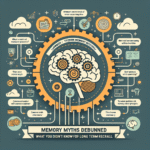
Can dressing as the opposite gender cause distress instead of comfort? For some, cross-dressing is more than self-expression. It’s linked to intense sexual arousal, leading to personal turmoil.
Transvestic Disorder, as defined in the DSM-5, involves recurrent and intense sexual arousal from cross-dressing. It causes significant distress or impairment in daily life. This paraphilic disorder shows how sexual gratification and societal expectations can lead to internal conflict.
Understanding Transvestic Disorder Psychology means looking into the psychological reasons behind this behavior. We will explore this condition’s implications for mental health.
Key Takeaways
- Transvestic Disorder is characterized by intense sexual arousal from cross-dressing.
- It is classified as a paraphilic disorder in the DSM-5.
- The condition causes significant distress or impairment in social, occupational, or other areas of functioning.
- Understanding the psychological aspects is key to addressing the distress.
- Treatment options are available to manage the condition and related mental health issues.
Understanding Transvestic Disorder
Transvestic disorder is complex, blending psychological aspects with its unique traits. It’s seen as a paraphilic disorder, marked by intense sexual arousal from dressing in the opposite gender. This arousal often causes significant distress or hampers daily life.
Definition and Overview
Transvestic disorder is marked by cross-dressing distress or psychological impairment. It’s different from casual cross-dressing. The disorder involves fantasies, urges, or actions linked to dressing differently, causing notable distress or impairment.
The DSM-5 sets clear criteria for diagnosing transvestic disorder. It requires a pattern of cross-dressing or related fantasies/urges, causing significant distress or impairment. This helps distinguish it from non-distressing cross-dressing behaviors.
Historical Context
Transvestic disorder’s understanding has changed over time. It reflects shifting views on cross-dressing and sexual behavior. Today, it’s seen as a specific paraphilic disorder.
Psychological and psychiatric studies have shaped our understanding of transvestic disorder. They’ve helped define its diagnostic criteria and differentiate it from other paraphilias. This shows the complexity of human sexuality and the need for detailed diagnostic categories.
Symptoms and Criteria
Symptoms of transvestic disorder vary among people. Common signs include intense sexual arousal from cross-dressing. This can be through fantasies, urges, or actual actions. The diagnostic criteria require these symptoms to be persistent and cause significant distress or impairment.
To be diagnosed, an individual must show significant distress or impairment from their cross-dressing. This distress can include feelings of guilt, shame, or anxiety. It can also affect social or work life.
The Psychological Impact of Cross-Dressing
For those with Transvestic Disorder, cross-dressing brings complex emotional and social challenges. This disorder causes significant distress, affecting people in various ways.
Emotional Distress
People with Transvestic Disorder often feel deep emotional pain. They may feel guilt, shame, or anxiety about being found out. This emotional struggle can make everyday life hard.
The distress isn’t just about cross-dressing. It’s also about the fear of being judged or facing job loss. This fear can make them keep their secret hidden, leading to more pain.
Co-occurring Disorders
Many with Transvestic Disorder also have other mental health issues. Depression and anxiety disorders are common. These problems come from the ongoing stress and emotional pain of cross-dressing.
Treating these disorders together is key. It requires a treatment plan that tackles both the main issue and the secondary conditions.
Social Challenges
Social challenges are a big part of the disorder’s impact. People may face social stigma and discrimination. This can lead to feeling isolated and lonely.
The need to keep their cross-dressing secret can also cause feelings of disconnection. It makes it hard to build and keep close relationships. This isolation can make their emotional pain worse.
Causes of Transvestic Disorder
Understanding Transvestic Disorder requires looking at many factors. These include biology, environment, and psychology. Research has shown what contributes to this condition.
Biological Factors
Biological factors are key in Transvestic Disorder. Genetics might make some people more likely to have it. Brain structure and function also play a role, mainly in sexual arousal and behavior.
Men often start cross-dressing in late childhood. Up to 3% of men have done this and felt sexually stimulated by it. This early start hints at biological influences, like genetics and hormones.
Environmental Influences
Environment also shapes Transvestic Disorder. Cultural norms, family, and early life experiences matter. For example, seeing cross-dressing young or feeling sexual arousal from it can lead to the disorder.
Societal views on cross-dressing and gender also matter. These views can influence how people act on their desires, affecting the disorder’s development.
Psychological Perspectives
Psychology is also important. The sexual arousal from cross-dressing and how one responds to it are key. It’s vital to tell the difference between the disorder and cross-dressing as an expression. The disorder causes significant distress or impairment.
Treatment often focuses on these psychological aspects. Therapy aims to reduce distress and improve life quality.
| Factor | Description | Impact |
|---|---|---|
| Biological | Genetic predispositions, neurobiological aspects | Influences likelihood and manifestation |
| Environmental | Cultural norms, family dynamics, early life experiences | Shapes perception and behavior |
| Psychological | Sexual arousal, psychological response | Determines distress and impairment level |
In conclusion, Transvestic Disorder’s causes are complex. They involve biology, environment, and psychology. Knowing these factors helps in finding effective treatments.
Diagnosis and Assessment
To accurately diagnose Transvestic Disorder, mental health professionals use the DSM-5 criteria. This ensures a thorough understanding of the individual’s condition.
Diagnostic Criteria in DSM-5
The DSM-5 outlines specific criteria for diagnosing Transvestic Disorder. It focuses on significant distress or impairment in social, occupational, or other important areas due to cross-dressing behaviors. The criteria include:
- Significant distress or impairment due to cross-dressing.
- Persistent cross-dressing behavior.
- The behavior is not better explained by another mental disorder.
According to the DSM-5, Transvestic Disorder is marked by a strong link between cross-dressing and clinically significant distress or impairment. This is key to distinguishing it from other conditions or benign cross-dressing behaviors.
| Diagnostic Criterion | Description |
|---|---|
| A | Significant distress or impairment due to cross-dressing. |
| B | The behavior is persistent. |
| C | The behavior is not better explained by another mental disorder. |
Assessment Tools and Techniques
Assessing Transvestic Disorder involves clinical interviews, psychological assessments, and behavioral observations. Mental health professionals use various tools and techniques to evaluate the disorder’s severity and its impact on the individual’s life.
Common assessment tools include:
- Clinical interviews to assess the individual’s history and experiences.
- Psychological questionnaires to evaluate distress and impairment.
- Behavioral observations to understand the context and frequency of cross-dressing behaviors.
These tools and techniques help professionals gain a deep understanding of the individual’s condition. This understanding is essential for effective treatment planning.
Treatment Options
People with transvestic disorder often seek help because it affects their personal lives. This includes their romantic relationships or marriages.
Treatment for transvestic disorder involves several steps. Each step is tailored to the person’s needs. The goal is to fix the underlying issues, improve mental health, and boost overall well-being.
Psychotherapy Approaches
Psychotherapy is key in treating transvestic disorder. Cognitive-behavioral therapy (CBT) helps change negative thoughts and behaviors linked to the condition.
- CBT can help manage the distress caused by cross-dressing.
- It also tackles other mental health problems, like anxiety or depression.
Other therapies might include psychodynamic therapy. This looks into the psychological roots of the disorder. Family therapy is also used, involving the person’s loved ones in treatment.
Medication Management
In some cases, medication helps with symptoms like anxiety or depression. Selective serotonin reuptake inhibitors (SSRIs) are often used for this.
It’s important for a healthcare professional to watch how the medication works. This ensures it’s effective and safe.
Support Groups and Resources
Support groups are vital for treating transvestic disorder. They offer a place to share experiences and get support from others who face similar challenges.
Being part of a support group can make someone feel less alone. It also gives them the strength to manage their condition. Online resources and educational materials provide more help and guidance during treatment.
By using these treatment options together, people with transvestic disorder can lessen their distress. They can also improve their quality of life.
The Role of Family and Friends
Family and friends play a big role in helping those with Transvestic Disorder. This condition brings a lot of emotional pain. Having a supportive group can really help.
Understanding and Support
Family and friends can offer a lot of emotional support. Being understanding and not judging can help reduce feelings of guilt and shame. Mental health experts say that love and acceptance from family and friends can help a lot in healing.
Support groups are also very helpful. They provide a safe place to share and learn from others. Family and friends can learn how to support better by joining these groups.
Challenges Faced by Loved Ones
Loved ones face their own challenges too. They might feel anxiety, depression, guilt, and shame if their partner or family member wants to cross-dress. This can make things complicated for everyone involved.
It’s important for loved ones to get support for themselves. This way, they can understand the condition better and support their loved ones better. A support group member said, “Having a supportive network made all the difference in our ability to understand and support our loved one.”
Creating a supportive environment is key. Family and friends can greatly help the mental health of those with Transvestic Disorder. Together, we can build a more inclusive and caring society.
Stigma and Societal Perceptions
The cross-dressing community and those with Transvestic Disorder face a lot of stigma. This stigma is harmful and makes it hard for them to get help and support openly.
Historical Stigmatization
For a long time, cross-dressing was seen as suspicious and was often illegal. The term “transvestite” was used in a negative way, adding to the stigma. This historical stigma has had a lasting impact, affecting how individuals with Transvestic Disorder see themselves and their place in society.
- Criminalization of cross-dressing in many jurisdictions
- Pathologization in psychiatric and medical literature
- Social ostracism and discrimination
Contemporary Views
Today, there’s more understanding and acceptance of cross-dressing and Transvestic Disorder. But, stigma is not gone yet. The media and popular culture play a big role in shaping public views, often using stereotypes.
Some key factors influencing today’s views include:
- Increased visibility of the cross-dressing community
- Advocacy and awareness efforts by support groups
- Changes in psychiatric and medical classifications
Overcoming Stereotypes
To overcome stigma, we need a multi-faceted approach. Education and awareness are key in challenging stereotypes and creating a more inclusive society. Support from family, friends, and mental health professionals is vital for individuals dealing with the distress associated with cross-dressing.
By promoting understanding and acceptance, we can work towards reducing stigma. This will help create a more supportive environment for individuals with Transvestic Disorder.
Cross-Dressing vs. Transvestic Disorder
Cross-dressing is common, but not everyone who does it has Transvestic Disorder. It happens in both straight and gay men. It’s key to know the difference between just cross-dressing and Transvestic Disorder, which is a serious condition.
Key Differences
The main difference is about distress or impairment. Cross-dressing can be a way to express oneself. But, Transvestic Disorder is when cross-dressing really hurts someone’s life or causes a lot of stress.
Here’s a table to help understand the differences:
| Characteristics | Cross-Dressing | Transvestic Disorder |
|---|---|---|
| Presence of Distress | Not necessarily present | Significant distress or impairment |
| Purpose | Form of self-expression or identity | Associated with sexual arousal or gratification |
| Impact on Life | Generally does not cause significant impairment | Causes significant impairment in social, occupational, or other areas |
Common Misconceptions
Many think everyone who cross-dresses has Transvestic Disorder. But, most people who cross-dress do not fit into the diagnostic standards of Transvestic Disorder. Another wrong idea is that Transvestic Disorder is only about cross-dressing. It’s really about the stress or problems it causes.
It’s important to understand these differences. This way, we can help those who are really struggling with cross-dressing. By knowing the difference, we can offer the right support and treatment.
Case Studies in Transvestic Disorder
Case studies give us a peek into the lives of those with Transvestic Disorder. They teach us valuable lessons. By looking at real-life examples, we can better understand this condition’s complexities.
Notable Examples
Many case studies show the varied experiences of those with Transvestic Disorder. For example, a study in the Journal of Clinical Psychology talked about a 35-year-old man. He struggled with cross-dressing, which got worse during stressful times.
“The patient’s ability to express his feminine side through cross-dressing provided temporary relief from psychological distress, but ultimately contributed to feelings of guilt and shame.”
Another example is a 28-year-old person who felt gender dysphoria during times of loss. At first, cross-dressing helped them cope. But later, it became a source of distress.
Lessons Learned
These studies teach us a lot about Transvestic Disorder. They show how important it is to look at the person’s whole situation when dealing with cross-dressing.
| Case Study | Key Findings | Implications |
|---|---|---|
| 35-year-old man | Cross-dressing behaviors linked to stress and anxiety | Need for stress management techniques |
| 28-year-old individual | Cross-dressing as a coping mechanism for loss and grief | Importance of addressing underlying emotional issues |
Also, these studies point out the need for a full treatment plan. This plan should tackle both symptoms and the reasons behind them. By learning from these examples, we can help those with this condition better.
Some people with transvestic disorder also face gender dysphoria linked to loss, grief, substance use, or depression. It’s key to understand these complexities to offer the right support and treatment.
Support for Individuals with Transvestic Disorder
Support for those with Transvestic Disorder is key. It can come from therapeutic practices and online resources. Managing the disorder well means tackling both the mind and social sides of it.
Therapeutic Practices
Therapy is a big help for those with Transvestic Disorder. Cognitive-behavioral therapy (CBT) is a method that works well. It helps people deal with the distress of their condition by changing negative thoughts and finding ways to cope.
Acceptance and commitment therapy (ACT) is another good practice. It helps people be more flexible and accept hard feelings and thoughts. ACT can also help lessen the shame of cross-dressing.
“The therapeutic relationship is a key part of treating Transvestic Disorder. A caring and unbiased therapist can offer a safe place for people to talk about their feelings and actions.”
Online Resources
Online help is also important for those with Transvestic Disorder. Online forums and support groups can help people feel less alone and less stigmatized.
- Online forums for Transvestic Disorder offer a safe place to talk and get advice.
- Support groups, both online and in-person, create a sense of community and connection.
- Websites and online resources provide info on the disorder, treatment, and coping strategies.
When their partner is supportive, cross-dressing men might engage in sex in feminine clothes. This is a big part of their experience and can be talked about in therapy or support groups.
The Future of Research
Research is making big strides in understanding Transvestic Disorder. It’s helping us see how it affects people. New studies are giving us insights into its causes, effects, and treatments.
Recent studies show that men who cross-dress have similar personality traits as others. This is important. It helps clear up wrong ideas about people with Transvestic Disorder.
Emerging Studies
Studies are looking into what causes Transvestic Disorder. They’re using new methods, like:
- Longitudinal studies to track the disorder’s development
- Genetic research to find markers
- Neuroimaging to study the brain’s role
These studies are helping us understand Transvestic Disorder better. They’re also guiding the creation of better treatments.
Areas for Further Exploration
There’s more to learn about Transvestic Disorder. We need to:
- Look at how society and culture affect it
- Study how mental health issues impact it
- Work on more tailored treatments
By diving into these areas, researchers can better support people with Transvestic Disorder.
As research grows, our understanding of Transvestic Disorder will too. This will lead to better care and support for those affected.
Community and Advocacy
Understanding and managing Transvestic Disorder is easier with community support. Organizations and advocacy play a big role. They offer resources, education, and a sense of belonging.
Organizations Supporting the Community
Many groups help those with Transvestic Disorder. They provide counseling and support groups. These groups are key in:
- Creating a safe space for sharing
- Offering educational materials
- Fighting for community rights
Groups like the American Psychological Association and The Trevor Project are important. They may not focus only on Transvestic Disorder but offer valuable help.

Advocacy Efforts and Their Importance
Advocacy is vital for raising awareness about Transvestic Disorder. It helps reduce stigma and promotes understanding. Advocacy can be through education, policy changes, and research support.
Good advocacy leads to:
- More public awareness
- Improved support and resources
- Policy changes that protect rights
Supporting advocacy helps create a more inclusive society. It’s important for everyone to work together for understanding and support.
Conclusion: Navigating Transvestic Disorder
Understanding Transvestic Disorder is key. Acceptance and support are essential for those affected. We must grasp the psychological effects, causes, and treatments to foster a supportive space.
Embracing a Path Forward
Acceptance means acknowledging the distress of Transvestic Disorder. It also means fighting the stigma around cross-dressing. We need education, awareness, and advocacy to deepen our understanding.
Fostering Support and Understanding
Support from loved ones and mental health experts is critical. A supportive and non-judgmental space helps individuals cope with their distress. Our aim is to build a culture of acceptance and support, empowering people to live openly and authentically.

















